Yellow lilies are usually vibrant, regal, cheerful and sight to behold type of flowers that many people often associate with happiness and positivity.
These flowers are numerous and appear in a variety of shapes and sizes each featuring unique characteristics, qualities and cultural requirements.
Whether you’re looking to add a burst of bright color to your home garden or intend to send a thoughtful gift to a loved one, yellow lilies will always be the perfect if not the first choice.
From the delicate, elegant and sweetly-scented trumpet lily to the bold and eye-catching oriental lily, to the sunny and cheerful Asiatic lilies, for sure there will always be a yellow lily to suit every taste and occasion.
This article provides a detailed view of the different types of yellow lilies and tries to compare them by discussing their characteristic, differences and similarities.
List of yellow lilies
- Cintronella —Asiatic Lily
- Grand Cru — Asiatic Lily
- King Pete — Asiatic Lily
- Black Spider — Asiatic Lily
- Connecticut King —Asiatic Lily
- Last Dance — Asiatic Lily
- Canada Lily —American Lily
- Goldsmith — Trumpet Lily
- Golden Splendor—Trumpet Lily
- Belladonna — Oriental Lily
- Deliana — Longiflorum Lily
- Leichtlin’s Lily
- Caucasian Lily
Description
Citronella —Asiatic Lily
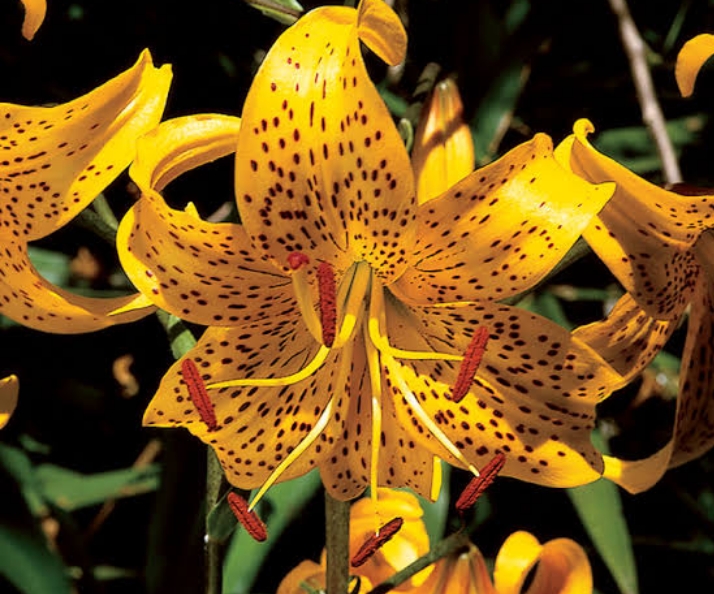
Citronella is a vibrant, cheerful Asiatic lily with large, trumpet-shaped flowers that are golden-yellow in color featuring gracefully recurved petals whose net effect is a wavy or ruffled appearance.
The flowers are held atop tall, sturdy stems with green leaves. Over the years the flower multiplies and forms a relatively big clumps characterized by numerous blossoms per stem.
Citronella are generally smaller in size when compared to other types of lilies, with flowers measuring about 4-5 inches in diameter.
Blooming in early to mid-summer, this lily can provide a pop of color and contrast everywhere it grows be it in a front or backyard flowerbed.
The flower mixes elegantly with annuals and other summer flowering bulbs especially when planted in the fall or early spring.
Due to their attractive appearance and lemon-scented fragrance, many people often use citronella-Asiatic lilies as cut flowers whereas others prefer them for use in bouquets and other arrangements.
This lily is easy to grow and care for as long as they are grown in a well-draining soil and a place with full sun or partial shade.
Also Read: Different Types of Yellow Peppers
Grand Cru — Asiatic Lily
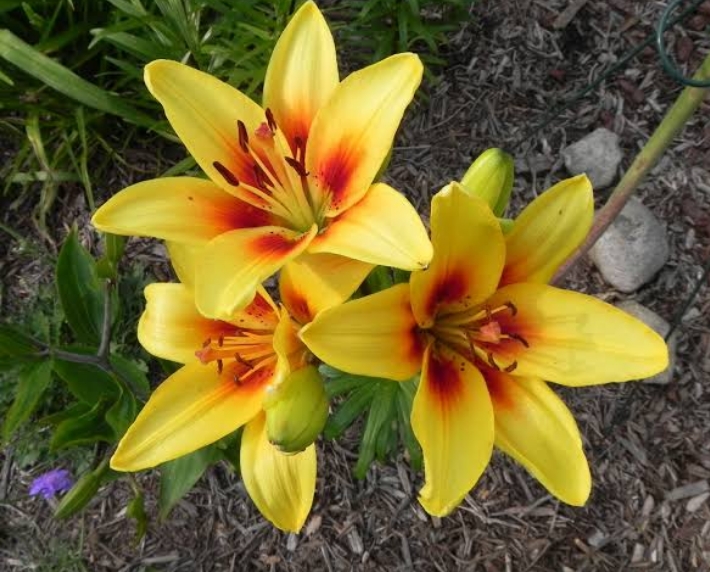
The Grand Cru Asiatic lily is one of the most common and widely grown cultivar of Asiatic lily in North America.
This cultivar oozes beauty and class, it even won the prestigious Award of Garden Merit of the Royal Horticultural Society (2002). Just like other lilies, it features an upward facing, trumpet-shaped flowers that are about 3 to 5 inches in diameter.
The flowers are bi-colored, featuring bright yellow petals and maroon red (burgundy) centers around the petal bases.
This Asiatic hybrid lily is hardy and can be grown in a variety of climates. It is generally suitable for growing in containers or flowerbeds.
If you’re looking forward to growing this lily variety, you will need to plant it in the fall or early spring, water them regularly and fertilize them once a month with a balanced fertilizer during the growing season. The plants may need staking if grown in too much shade or in areas exposed to strong winds.
King Pete — Asiatic Lily

King Pete is another yellow lily, a cultivar of Asiatic lily to be precise. The lily is amazingly beautiful with its wide and bright yellow petals contrasting with a darker yellow heart and dark-brown freckles.
The petals are smooth and glossy with a waxy or velvety texture. The flowers are actually borne on strong, upright stems that range in height from 2 to 4 feet tall. They are definitely beautiful when planted either in a front or back yard of a home garden as part of accent plants.
They can be propagated by dividing the bulbs or by planting the bulbs in the fall or early spring. Just like other lilies, you can grow this cultivar in containers or directly in the ground in a flowerbed.
To enjoy the beauty of this lily throughout the season, ensure they are protected from pests such as aphids and slugs and divide the bulbs every three to four years to keep the plants healthy and encourage new growth.
Also Read: Different Types of White Lilies
Black Spider — Asiatic Lily
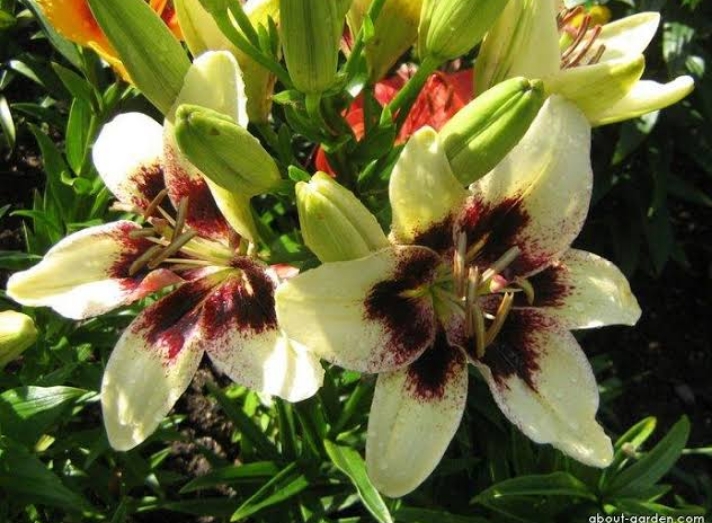
The Black spider Asiatic lily is not a very common cultivar but it is still striking and amazing especially when planted as entryway plants.
They really contrast well with the surrounding plants or other elements to create emphasis or focal points. The flowers are unique spider-like in shape and creamy-yellow with almost deep purple or almost black heart.
Black spider is also quite abundant with up to 5 to 7 flowers per stem. The plant in generally reaches between 2 to 4 feet tall and is particularly striking when grown in groups of 3 or 4.
Blooming in early to mid-summer, this lily variety is well suited for growing in containers or planters. It is actually low maintenance in nature and resistant to many common plant diseases, though prone to damage from slugs and snails.
Also Read: Trees With Purple Flowers In Spring
Connecticut King — Asiatic Lily
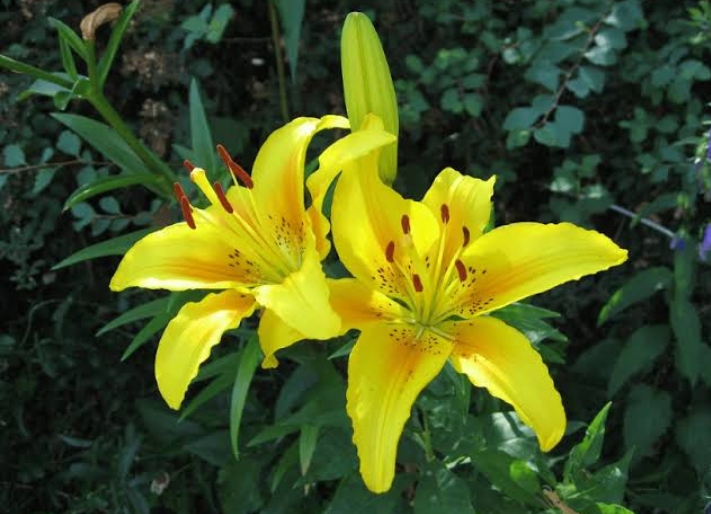
Connecticut King is an Asiatic hybrid lily that features buttercup yellow flowers with golden centers. The flowers are large, spotless and non-fragrant in nature more often appearing during early to mid-summer.
This flower lily has been the most favorite commercial yellow lily since its introduction in 1967. They look splendid especially when grown in containers along walk ways or around the perimeter wall.
The Connecticut King Asiatic lily is a popular choice for gardens and landscaping particularly in North America as it is easy to grow and care for.
You can plant these lilies any time from spring to fall especially if your growing them in containers. Plant in groups of three and 12 inches apart for best display or accent.
They grow best in full sun to partial shade and prefers well-draining soil. Then, as they grow, you will need to often remove any faded flowers to prevent seeds from setting.
Pearl Melanie (Last Dance) — Asiatic Lily

Last dance is a hybrid Asiatic lily featuring large showy yellow flowers on long stalks. The petals are surely long-narrow, smooth and glossy with a waxy or velvety texture.
The plant grows to a height of between 2 to 4 feet and a spread of 1 to 2 feet. Last dance Asiatic lily will without fail bloom in late spring or early summer and can continue to produce flowers for several weeks.
It is particularly easy to grow and care for. With proper care, Last dance Asiatic lily can live for several years and continue to produce beautiful flowers.
Last dance lily can tolerate a wide range of temperatures and are hardy in USDA hardiness zones 3-9. When growing them, it is important you give these lilies enough space to grow.
Plant them at least 18 inches apart to allow for proper air circulation and prevent the spread of diseases. You will also need to mulch around the base of the plants to help retain moisture and keep the roots cool. Potted plants may be planted at any time between spring and fall.
Bushstroke — Asiatic Lily
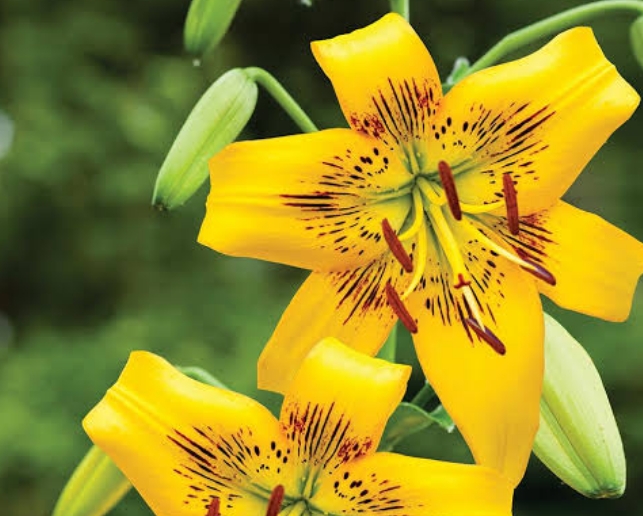
Bushstroke Asiatic lily are generally yellow in color, trumpet-shaped and have six petals that are fused at the base to form a tube. The petals are long, smooth, slightly curved and flare out at the top to form a flared, open shape.
Blooming in early to mid-summer, this lily works perfectly as border plant or a focal point in a front yard. It provides a striking color and contrast or mixes well with other perennial and annual plants in a flowerbed.
When planting Bushstroke Asiatic Lily choose a location that receives at least 6 hours of direct sunlight per day.
As with other lilies, they prefer moist, well-draining soil with a pH range of 6.5-7.5. Plant in fall or early spring in the flowerbed or containers.
To improve the drainage of heavy or clay soils, mix in compost or other organic matter before planting. Plant in groups of 3, 6 or 12 bulbs for a striking display.
Also Read: Different Types of Yellow Apples
Canada Lily —American Lily
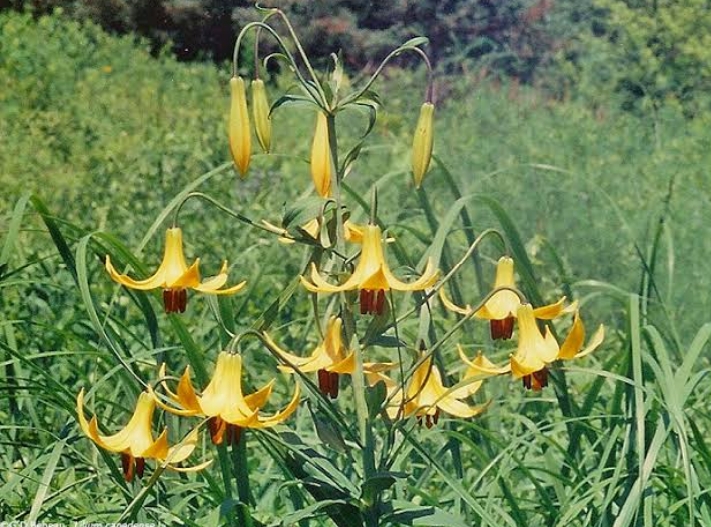
Canada lily is a common ornamental lily that’s cultivated in Europe and North America. The Canada lily is often found growing wild in moist, shaded areas such as woods and meadows.
It is a perennial plant that grows to a height of about 2 to 4 feet, with large, showy flowers that are orange or yellow in color. The flowers have six petals and are held atop tall, slender stems.
Canada lily can be a beautiful addition to any landscape, providing a splash of color and interest to any accent garden. It also mixes or contrasts well with annual or perennial plants in a flowerbed.
It is a hardy plant that is easy to grow and care for and is resistant to deer and other garden pastes. It is also known by the common names like wild lily, meadow lily and orange lily. Plant in groups of 3, 6 or 12 bulbs for a striking display.
Goldsmith — Trumpet Lily
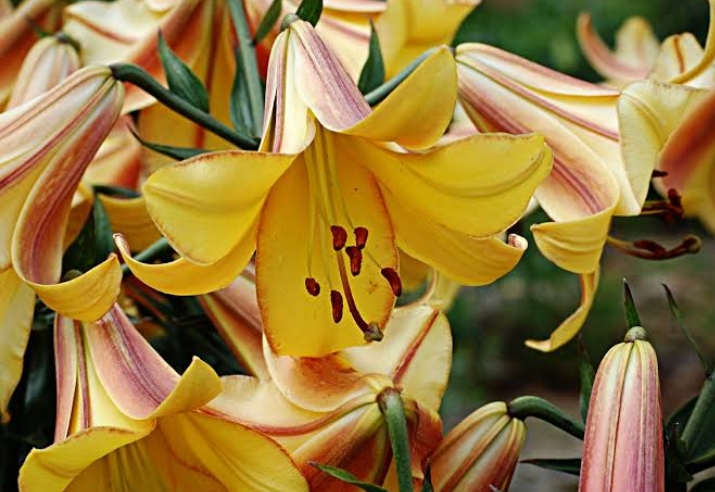
The goldsmith trumpet also referred to as the golden rain lily or the golden trumpet lily is an amazingly beautiful lily grown in many places in North America as an ornamental plant due to its showy, trumpet-shaped flowers which feature yellow petals and a distinctive sweet scent.
The plant in general has long, narrow leaves and can grow to a height of between 2 and 4 feet with appropriate care.
Goldsmith trumpet lily is often planted in front yards, borders and planters, and is well suited for growing in warm, sunny location.
Blooming in early to mid-summer, this lily is particularly a popular choice for many gardeners looking forward to adding an interest of color and fragrance to their outdoor spaces.
This lily plant is not tolerant of drought and cold temperatures. It also lacks ability to thrive in a variety of soil types. It will only thrive in loamy well drained soil.
Golden Splendor—Trumpet Lily
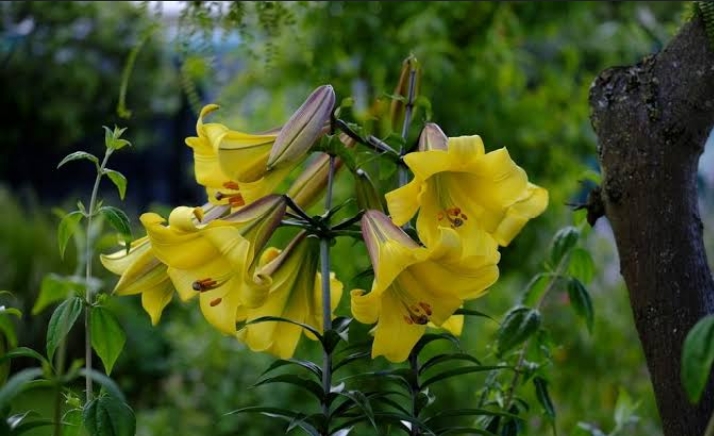
The golden splendor lily is a splendid hybrid of trumpet lily characterized by large, fragrant, golden yellow flowers, facing outward or downward, marked with purple red on the outside.
The flowers are held on tall, sturdy stems and have a trumpet-shaped form with reflexed petals. The flowering plant in general can reach heights of up to 5 feet.
This is a long-blooming plant that typically flowers in mid to late summer. It is prolific in nature, producing clusters of 12 to 20 blossoms per stem making it a popular garden plant and often grown for cut flowers.
Golden splendor trumpet lilies prefer full sun to partial shade. They will tolerate some shade but they will flower best in a location that receives at least 6 hours of direct sunlight per day. Plant in groups of 3 bulbs at a minimum for a striking display.
Belladonna — Orienpet Lily
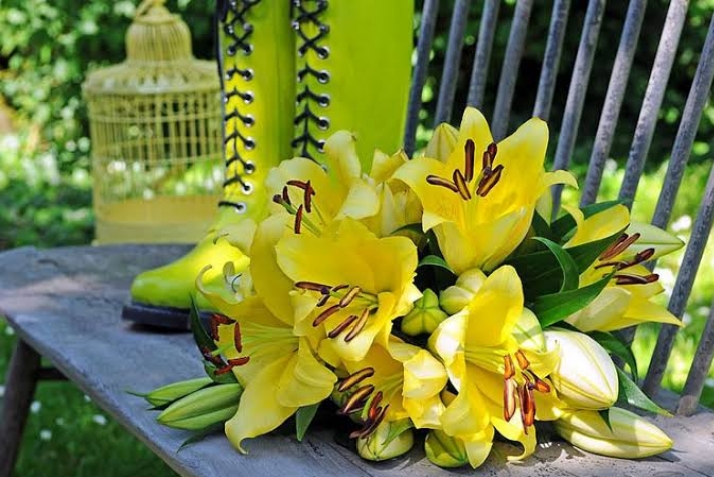
Generally, Belladonna lilies are native to Asia but are widely cultivated around the world for their beauty and fragrance. Belladonna Orienpet lilies are actually hybridized from Oriental and trumpet lilies.
They are popular because of their tall, stately growth habit and large, bowl-shaped, golden yellow blossoms with gently recurved petals. These flowers are almost a sure bet when it comes to adding a touch of elegance and charm to any front or back yard.
Belladonna orienpet lilies are easy to grow and are well-suited for a variety of garden settings at home. They prefer full sun to partial shade and well-draining soil. They can be grown from bulbs or from seed and they will bloom in the second or third year after planting.
One important thing to keep in mind is that all parts of the belladonna lily are toxic to pets and animals. You will need to be careful and plant them in a location where they will not be accessible to pets.
Also Read: Different Types of Yellow Roses
Deliana — Longiflorum Lily
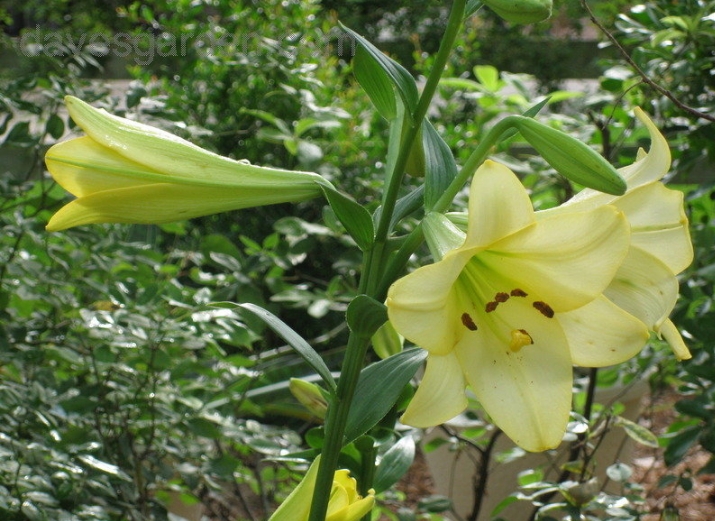
Deliana longiflorum lily is a perennial plant which means it can live for several years and will without fail bloom annually. The plant grows to a height of between 1 and 3 feet and features long, slender leaves.
This lily blooms in the spring, but the exact timing can vary depending on the specific growing conditions. The blooms are pure yellow, trumpet-shaped with fragrant scent. The flowers typically open yellow and fades to creamy white with time.
Deliana longiflorum lily sometimes referred to as Japanese lily or Easter lily is a lily cultivar that’s native to Ryukyu Islands of Japan. It is widely cultivated an ornamental plant in gardens and is commonly used in cut flower arrangements because of its sweet fragrance. In very many places it is often used as a symbol of Easter and the resurrection of Jesus.
As with other lilies, the plant prefers well-drained soil and full to partial shade. It is generally easy to grow and is relatively hardy, but it may require some protection from extreme cold or heat. With proper care, the Deliana longiflorum lily can continue to grow and bloom for many years.
Leichtlin’s Lily
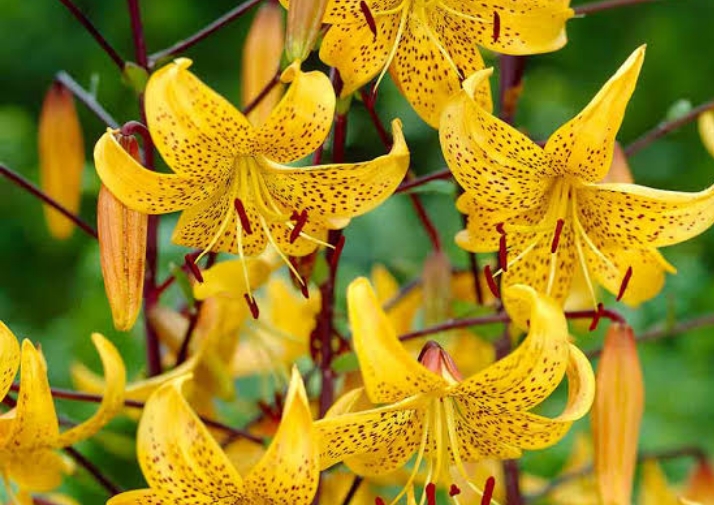
Leichtlin’s Lily is a wild lily variety that are similar in appearance to the tiger lily. The lily was named after the German botanist, John Leichtlin.
The plant grows to a height of between 1 and 3 feet and produces yellow trumpet-shaped flowers that have burgundy or purple red spots.
The blooms open on green and purple stems from spring to mid-summer and last for a considerably long time in both gardens and vases. Leichtlin’s lily are hardy and can grow relatively well in a variety of soil types.
Also Read: Different Types of Red Sunflowers
Caucasian Lily
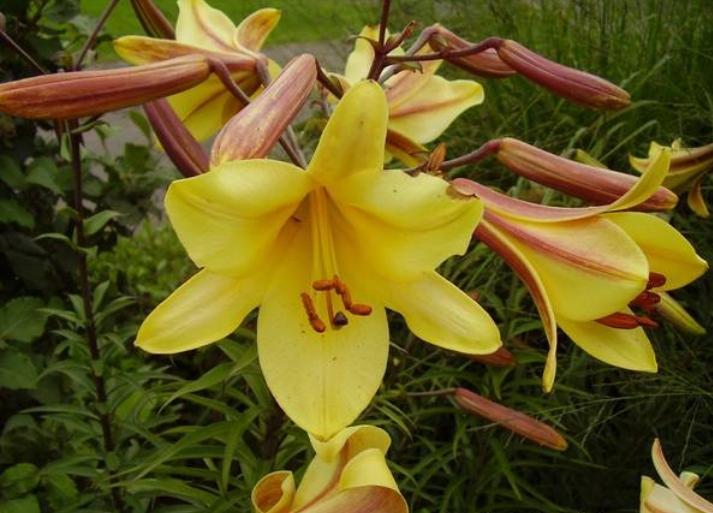
Caucasian lily (Lilium monadelphum) is a lily variety that is native to the Caucasus region which includes Georgia, Armenia and Azerbaijan. The plant has long slender leaves and grows to a height of between 2 and 4 feet when in bloom.
The flowers are usually large, scented and yellow in color with a distinctive dark purple or brown band at the base of each petal. The flowers have six petals and are up to 8 inches (20 cm) in diameter.
The Caucasian lily is hardy and can tolerate cold temperatures, making it suitable for growing in a wide range of climates. The lily is particularly hardy in USDA hardiness zones 4-8.
It is often grown as a garden plant and is loved by many in North America for its attractive flowers and pleasant scent. The grow this lily, just plant bulbs about 8 inches deep and space them about 6 inches apart. After they have grown, use a layer of mulch in the form of straws or shredded leaves to help retain moisture and keep the soil cool.